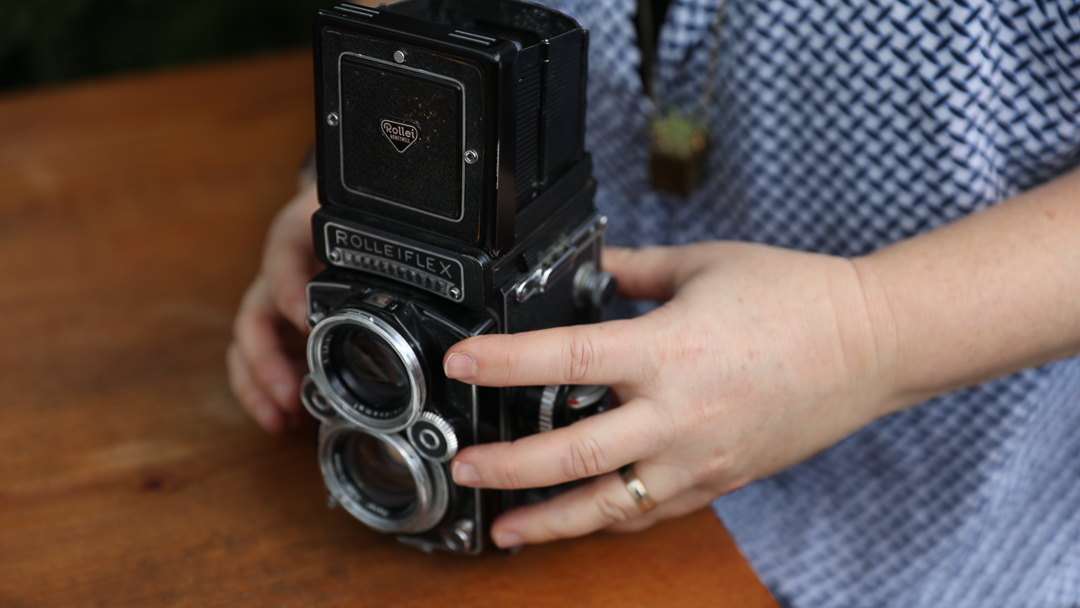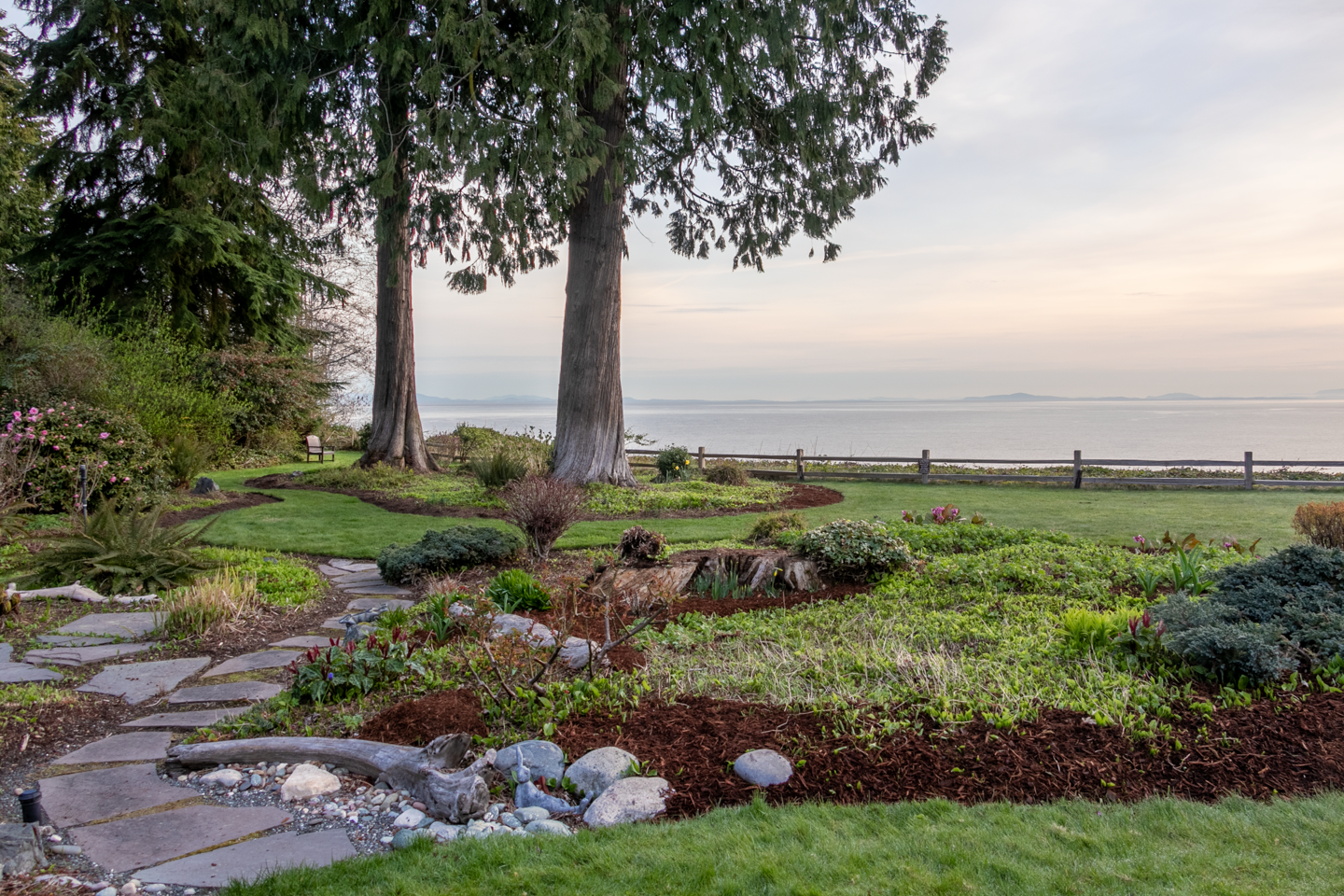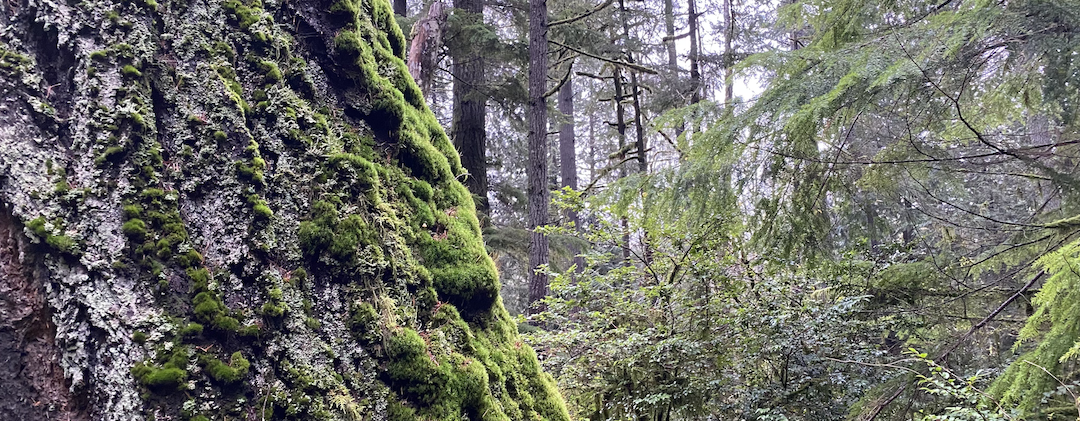Which came first, the container or the plant?
Sometimes, when I am asked to design a container, we start with the homeowner’s existing containers and build from there. Other times, the owner fell in love with an amazing plant and just wants to enjoy it all season before deciding where to plant it. Holding a plant in a container is a great way to know how it behaves throughout the year. But sometimes, it’s hard to make it look its best for the season.
Here, a homeowner on a garden tour wanted to make this Sumac (Rhus typhina ‘Tiger Eyes’) really shine. This isn’t my design, but I wanted to share with you why it works, so you can do this too.
Complementary Colors
Do you remember your color wheel? If we started creating a planting combination taking our cues from the blue pot, we could have planted it up with orange annuals, and grasses like my favorite orange Carex testacea (the dotted line shows complementary colors). However, that’s a little bit flat and boring.

Instead, we can use a Split Complementary combination technique to make the limey-golden leaves of the Sumac really shine. By adding annuals with orange, blue, and purple accents we make the container really pop!
Get the Look
[Pin for Later] The key to this combination really is the blue container. Make sure you choose a wide container so you have room for all of those plants! One with a slight taper will make it easy to re-pot when you decide to plant the sumac in the ground. You can splurge by choosing a fancy glazing, or an interesting texture, but there is so much interesting plant material that really, anything will do.
Then choose your feature plant. The golden Sumac shown is a great choice, but if you choose to plant it out in your garden, it is known to sucker … that is, you will have runners and new Sumac plants all over. Which is great, you’ll be able to give some to your friends! But if you don’t want to risk it, there are a lot of nice small conifers to choose. I recommend Chamaecyparis lawsoniana ‘Empire’ with its conical form and golden color. Karen Chapman has a great description of other small conifers that are great in containers.
Next, accessorize! Keeping with the Fine Foliage theme, add annuals and perennials with supporting leaf habit, for a long-season of interest. Here, Pelargonium hortorum tricolor, with its triple-variegation, brings in the third color – orange! The supporting cast includes long-lasting annuals like Bacopa ‘Gulliver’s Blue’, Lysimachia ‘Persian Carpet’ and the Blue Pimpernel, Anagallis monellii. But don’t be paralyzed if you can’t find the ones listed here. Make these easy substitutions:
- Can’t find the three-colored Pelargonium? Look for the alternative Pelargonium ‘Vancouver Centennial’ with its wavy edges.
- No blue Pimpernel? Use trailing Lobelia instead!
- No creeping jenny ‘Persian Carpet’? Try Lysimachia ‘Midnight Sun’ or even the lime-green Ipomoea ‘Margarita’ to get a golden trailing plant.
- No blue Bacopa? Look for a purple aster, the Swan-River Daisy Brachyscome, or rely on a purple Petunia!
- Add some Violas to extend the season or pop in some bright Nasturtiums
Whatever you do, have fun and enjoy your plants.
Save
Save
Save
Save
Save











